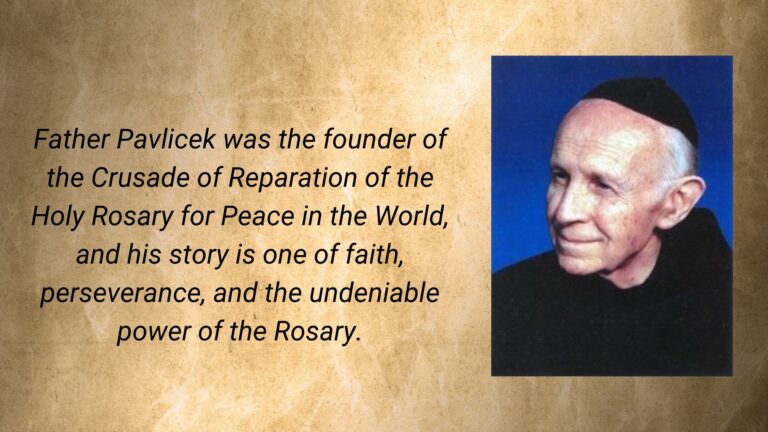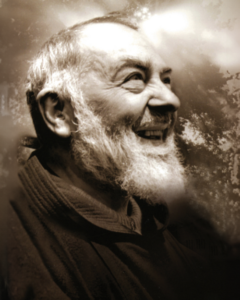
Padre Pio, the revered Capuchin friar, mystic, and miracle worker, famously referred to the Rosary as “his weapon.” This powerful devotion, given to us by Our Lady, has the ability to transform hearts, liberate nations, and drive away evil forces. One profound historical example of its power comes from post-World War II Austria, where the Rosary helped free the country from communist control.
The Rosary as a Spiritual Weapon

When Padre Pio described the Rosary as a weapon, he wasn’t speaking of physical violence. Rather, he had spiritual warfare in mind, using prayer to combat evil and bring souls closer to God. The Rosary, often seen as a simple devotion, is a powerful tool that has been instrumental in countless miraculous events throughout history.
One such event is tied to Father Petrus Pavlicek, who took the message of Our Lady of Fatima to heart. Father Pavlicek was the founder of the Crusade of Reparation of the Holy Rosary for Peace in the World, and his story is one of faith, perseverance, and the undeniable power of the Rosary.
Austria Under Communist Control
After World War II, Austria was divided between the Allies, with the eastern half, including Vienna, falling under Soviet control. The people of Vienna suffered under communist oppression. In 1946, Father Pavlicek, deeply concerned about the state of his country, made a pilgrimage to Mariazell, Austria’s principal Marian shrine. There, while praying before the image of Our Lady, he heard a clear message: “Do as I say, and there will be peace.”
This message echoed the words of Our Lady of Fatima, who had promised that peace could be attained through the Rosary and devotion to her Immaculate Heart. Father Pavlicek understood that prayer, particularly the Rosary, was the key to freeing Austria from its oppressors.
The Holy Rosary Crusade
In 1947, Father Pavlicek launched the Holy Rosary Crusade, gathering people from across Austria to pray the Rosary on the 13th of each month, the date associated with the apparitions of Our Lady of Fatima. He travelled across Soviet-controlled Austria with a statue of Our Lady of Fatima, leading prayer processions in villages, towns, and cities. At first, many people were afraid to participate, but gradually, the sight of others praying gave them hope and courage.
The movement grew rapidly, and soon it was not just ordinary citizens participating in the processions but also priests, bishops, and even high-ranking government officials. By 1955, over half a million people—roughly one-tenth of Austria’s population—were praying the Rosary for peace and liberation.
Miraculous Liberation
Despite numerous peace conferences over the years, the Soviet grip on Austria remained firm. That is, until 1955, when, in an unexpected turn of events, the Soviets announced their intention to withdraw from Austria. On May 15, the Month of Mary, the Soviets signed a treaty guaranteeing Austrian independence. By October, the Month of the Rosary, the last Soviet soldier left the country. The Rosary processions had succeeded where human efforts had failed.
On September 12, the feast of the Holy Name of Mary, thousands of Austrians gather annually in Vienna to thank Our Lady for her intercession in liberating their country from communist domination. As Father Pavlicek wisely said, “Peace is a gift of God, not the work of politicians.”
The Rosary: A Powerful Tool for Change
This remarkable story of Austria’s liberation is a testament to the power of the Rosary. Despite its simplicity, the Rosary has the strength to bring about peace, drive away evil, and obtain conversions. As Our Lady of Fatima said, “Many souls go to Hell because they have no one to pray for them.” Through the Rosary, we have the opportunity to pray for those souls and bring about positive change in the world.
Let us continue to embrace this spiritual weapon, trusting in its efficacy and seeking the intercession of Our Lady in all our endeavors.

